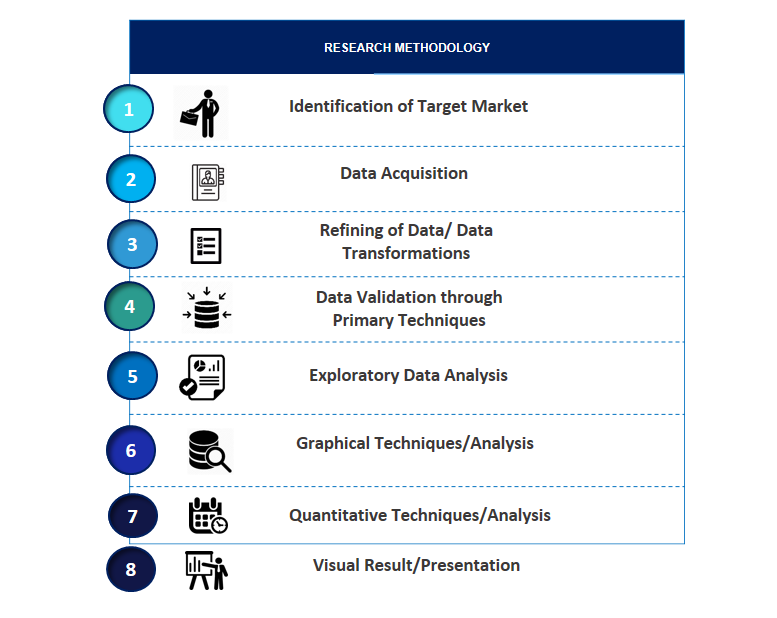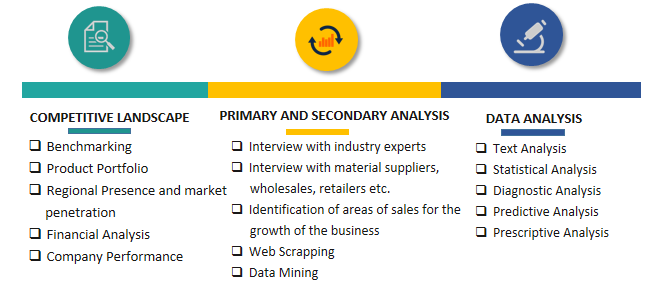Europe Sugar Substitute Market Introduction and Overview
According to SPER Market Research, the Europe Sugar Substitute Market is estimated to reach USD XX billion by 2033 with a CAGR of 5.07%.
The report includes an in-depth analysis of the Europe Sugar Substitute Market, including market size and trends, product mix, distribution channels, and supplier analysis. A sugar substitute is a low- or zero-calorie food ingredient that tastes like sugar but has a significantly lower calorie count than sugar-based sweeteners. They can be manufactured intentionally with chemicals and preservatives, or they can be taken from natural materials.
- ADM and Aston Foods (Russia) established a joint venture for sweets and starches in Russia in July 2018. This facilitated the company's entry into the Russian market for sugar alternatives.
- In July 2020, Tate & Lyle will make available the design tools for the VANTAGE sweetener solution. It is a set of cutting-edge tools for designing sweetener solutions and an instructional program for making low-calorie, sugar-reduced foods and beverages.
Market Opportunities and Challenges
Opportunities: Growing Requirement for Food Products Low in Sugar. Because of the growing global concern over obesity and diabetes in recent years, food and beverage industries have been in greater demand for low-calorie sweeteners. Many major beverage companies are introducing products with natural, low-calorie sweeteners like stevia in place of traditional sugar and replacing the application of sugar with sugar replacements. Due to the growth in health issues associated with sugar consumption and the growing knowledge and preference for low-calorie food and beverage items in European nations like the United Kingdom, Germany, France, Spain, and others, the market for sugar substitutes is expected to expand in developing nations.
Challenges: On the other hand, a number of scientists think that using sugar substitutes in excess might cause major health issues such type II diabetes, heart disease, obesity, and in rare circumstances, cancer. As artificial sweeteners have developed and sugar replacements have been less readily available, customer preferences have shifted in favor of them, restricting market growth.
Market Competitive Landscape
The market for sugar substitutes in Europe is consolidated due to the competition from numerous international food ingredient companies. Tate & Lyle PLC, Cargill, Inc., Ingredion Incorporated, Kerry Group plc, Roquette Frères, Koninklijke DSM N.V., DuPont de Nemours, Inc., Archer Daniels Midland Company, and other prominent players are a few of the market's major players.
Scope of the Report:
| Report Metric | Details |
| Market size available for years | 2020-2033 |
| Base year considered | 2023 |
| Forecast period | 2024-2033 |
| Segments covered | By Origin, By Type, By Application
|
| Regions covered | UK, France, Germany, Italy, Spain, Rest of Europe
|
| Companies Covered | Archer Daniels Midland Company, Cargill, Incorporated, DuPont de Nemours, Inc., Ingredion Incorporated, Kerry Group plc, Koninklijke DSM N.V., Puratos Group, Roquette Frères, Tate & Lyle PLC.
|
COVID-19 Impact on Europe Sugar Substitute Market
The COVID-19 epidemic in Europe is starting to seriously hinder the continent's economy and has an effect on the expansion of the food and beverage sector. Major food products are produced in smaller quantities by food manufacturers. Furthermore, the COVID-19 epidemic has caused a sharp rise in demand for less sugary and immunity-boosting products as individuals look for ways to improve their general health and well-being. The majority of health-conscious consumers have resorted to low-calorie or sugar-free items. Manufacturers and product formulators have been obliged to employ sugar alternatives due to the growing health consciousness and increasing demand among European consumers for sugar-reduced solutions.
Key Target Audience:
- Diabetics and Health-Conscious Consumers
- Weight Watchers and Fitness Enthusiasts
- Food and Beverage Industry Professionals
- Individuals with Sugar-Related Health Conditions
- Parents and Caregivers Seeking Healthier Options for Children
- Athletes and Sports Nutritionists
- Aging Population and Individuals Concerned with Age-Related Health Issues
- Individuals on Low-Carb or Ketogenic Diets
Our in-depth analysis of the Europe Sugar Substitute Market includes the following segments:
|
By Origin: |
Natural
Artificial/Synthetic
|
|
By Type: |
High-Intensity
Low-Intensity
High Fructose Syrup
|
|
By Application: |
Food
Beverage
Pharmaceutical
|
Key Topics Covered in the Report:
- Europe Sugar Substitute Market Size (FY’2024-FY’2033)
- Overview of Europe Sugar Substitute Market
- Segmentation of Europe Sugar Substitute Market By Origin (Natural, Artificial/Synthetic)
- Segmentation of Europe Sugar Substitute Market By Type (High-Intensity, Low-Intensity, High Fructose Syrup)
- Segmentation of Europe Sugar Substitute Market By Application (Food, Beverage, Pharmaceutical)
- Expansion Analysis of Europe Sugar Substitute Market
- Problems and Obstacles in Europe Sugar Substitute Market
- Competitive Landscape in the Europe Sugar Substitute Market
- Impact of COVID-19 and Demonetization on Europe Sugar Substitute Market
- Details on Current Investment in Europe Sugar Substitute Market
- Competitive Analysis of Europe Sugar Substitute Market
- Prominent Players in the Europe Sugar Substitute Market
- SWOT Analysis of Europe Sugar Substitute Market
- Europe Sugar Substitute Market Future Outlook and Projections (FY’2024-FY’2033)
- Recommendations from Analyst
1. Introduction
1.1. Scope of the report
1.2. Market segment analysis
2. Research Methodology
2.1. Research data source
2.1.1. Secondary Data
2.1.2. Primary Data
2.1.3. SPER’s internal database
2.1.4. Premium insight from KOL’s
2.2. Market size estimation
2.2.1. Top-down and Bottom-up approach
2.3. Data triangulation
3. Executive Summary
4. Market Dynamics
4.1. Driver, Restraint, Opportunity and Challenges analysis
4.1.1. Drivers
4.1.2. Restraints
4.1.3. Opportunities
4.1.4. Challenges
4.2. COVID-19 Impacts of the Europe Sugar Substitute Market
5. Market variable and outlook
5.1. SWOT Analysis
5.1.1. Strengths
5.1.2. Weaknesses
5.1.3. Opportunities
5.1.4. Threats
5.2. PESTEL Analysis
5.2.1. Political Landscape
5.2.2. Economic Landscape
5.2.3. Social Landscape
5.2.4. Technological Landscape
5.2.5. Environmental Landscape
5.2.6. Legal Landscape
5.3. PORTER’s Five Forces
5.3.1. Bargaining power of suppliers
5.3.2. Bargaining power of buyers
5.3.3. Threat of Substitute
5.3.4. Threat of new entrant
5.3.5. Competitive rivalry
5.4. Heat Map Analysis
6. Competitive Landscape
6.1. Europe Sugar Substitute Market Manufacturing Base Distribution, Sales Area, Product Type
6.2. Mergers & Acquisitions, Partnerships, Product Launch, and Collaboration in Europe Sugar Substitute Market
7. Europe Sugar Substitute Market, By Origin (USD Million) 2020-2033
7.1. Europe Sugar Substitute Market Size, Share and Forecast, By Origin, 2020-2026
7.2. Europe Sugar Substitute Market Size, Share and Forecast, By Origin, 2027-2033
7.3. Natural
7.4. Artificial/Synthetic
8. Europe Sugar Substitute Market, By Type (USD Million) 2020-2033
8.1. Europe Sugar Substitute Market Size, Share and Forecast, By Type, 2020-2026
8.2. Europe Sugar Substitute Market Size, Share and Forecast, By Type, 2027-2033
8.3. High-Intensity
8.4. Low-Intensity
8.5. High Fructose Syrup
9. Europe Sugar Substitute Market, By Application (USD Million) 2020-2033
9.1. Europe Sugar Substitute Market Size, Share and Forecast, By Application, 2020-2026
9.2. Europe Sugar Substitute Market Size, Share and Forecast, By Application, 2027-2033
9.3. Food
9.4. Beverage
9.5. Pharmaceutical
10. Europe Sugar Substitute Market Forecast, 2020-2033 (USD Million)
10.1. Europe Sugar Substitute Market Size and Market Share
11. Europe Sugar Substitute Market, By Region, 2020-2033 (USD Million)
11.1. Europe Sugar Substitute Market Size and Market Share By Region (2020-2026)
11.2. Europe Sugar Substitute Market Size and Market Share By Region (2027-2033)
11.3. France
11.4. Germany
11.5. Italy
11.6. United Kingdom
11.7. Rest of Europe
12. Company Profile
12.1. Archer Daniels Midland Company
12.1.1. Company details
12.1.2. Financial outlook
12.1.3. Product summary
12.1.4. Recent developments
12.2. Cargill, Incorporated
12.2.1. Company details
12.2.2. Financial outlook
12.2.3. Product summary
12.2.4. Recent developments
12.3. DuPont de Nemours, Inc.
12.3.1. Company details
12.3.2. Financial outlook
12.3.3. Product summary
12.3.4. Recent developments
12.4. Ingredion Incorporated
12.4.1. Company details
12.4.2. Financial outlook
12.4.3. Product summary
12.4.4. Recent developments
12.5. Kerry Group plc
12.5.1. Company details
12.5.2. Financial outlook
12.5.3. Product summary
12.5.4. Recent developments
12.6. Koninklijke DSM N.V.
12.6.1. Company details
12.6.2. Financial outlook
12.6.3. Product summary
12.6.4. Recent developments
12.7. Puratos Group
12.7.1. Company details
12.7.2. Financial outlook
12.7.3. Product summary
12.7.4. Recent developments
12.8. Roquette Frères
12.8.1. Company details
12.8.2. Financial outlook
12.8.3. Product summary
12.8.4. Recent developments
12.9. Tate & Lyle PLC
12.9.1. Company details
12.9.2. Financial outlook
12.9.3. Product summary
12.9.4. Recent developments
12.10. Others
13. List of Abbreviations
14. Reference Links
15. Conclusion
16. Research Scope
SPER Market Research’s methodology uses great emphasis on primary research to ensure that the market intelligence insights are up to date, reliable and accurate. Primary interviews are done with players involved in each phase of a supply chain to analyze the market forecasting. The secondary research method is used to help you fully understand how the future markets and the spending patterns look likes.
The report is based on in-depth qualitative and quantitative analysis of the Product Market. The quantitative analysis involves the application of various projection and sampling techniques. The qualitative analysis involves primary interviews, surveys, and vendor briefings. The data gathered as a result of these processes are validated through experts opinion. Our research methodology entails an ideal mixture of primary and secondary initiatives.


